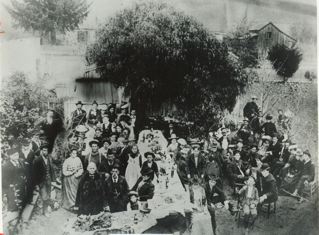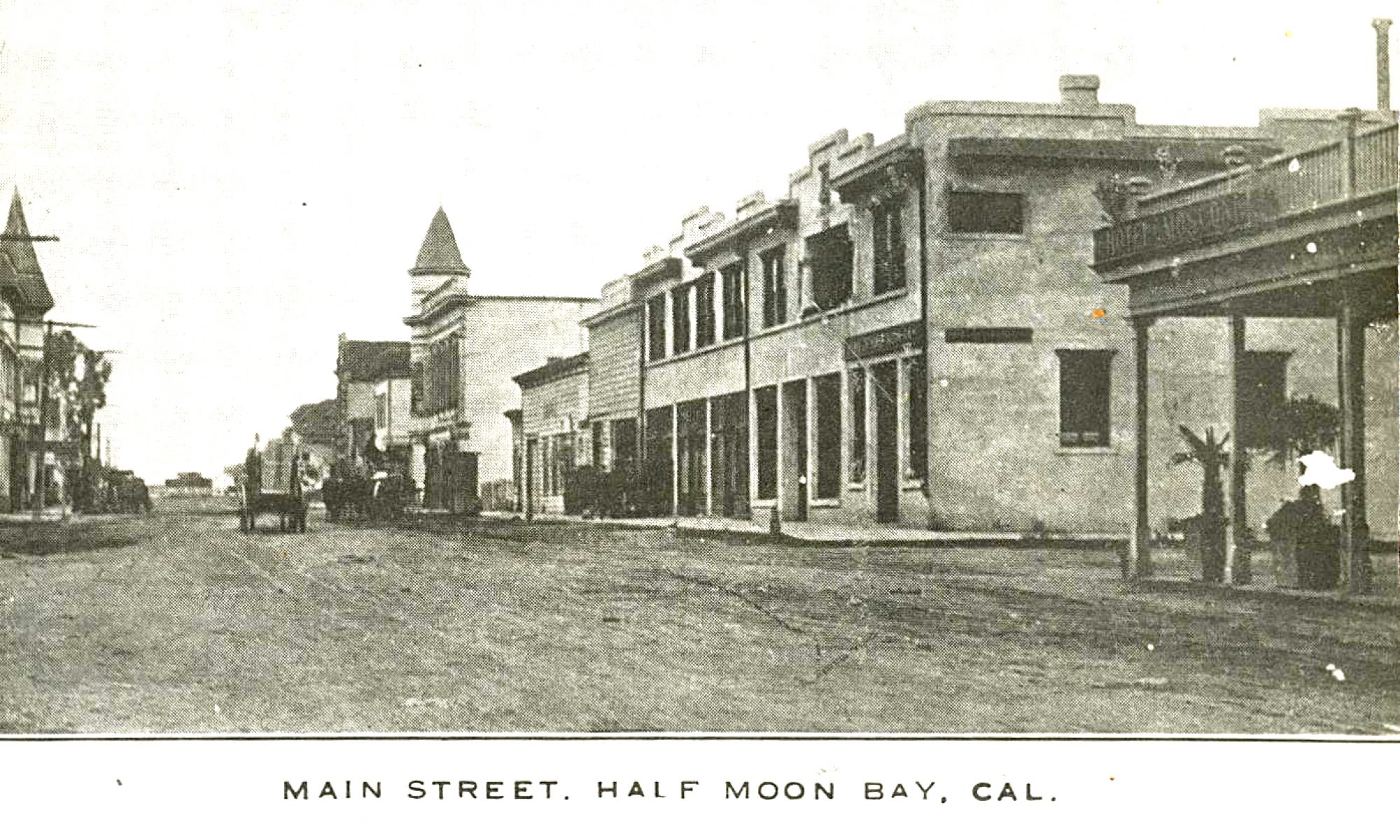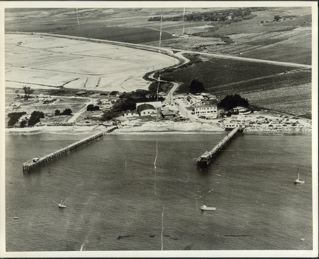 The Miramontes-Gonzales Family celebrating a family anniversary on Main Street, Half Moon Bay, mid-19th century*
The Miramontes-Gonzales Family celebrating a family anniversary on Main Street, Half Moon Bay, mid-19th century*
In 1980 I interviewed Marion and Bill Miramontes for the documentary âThe Mystery of Half Moon Bay.â?
Marion had been the townâs first telephone operator as well as a respected local historian. She penned occasional articles for the âHalf Moon Bay Reviewâ?. Bill worked for Standard Oil during the time that the company had a large presence on the Coastside.
The history of the Miramontes family reaches back to the adobes of Half Moon Bay, originally known as San Benito. The Miramontesâ were major rancho owners, their property including the present town of Half Moon Bay. In their honor, the southern point of Half Moon Bay was named Miramontes Point
Here are some excerpts from the interview, which, unfortunatelyâand sadly, did not appear in the final show that aired.
I met Marion and Bill Miramontes at their home on the west side of Highway 1 in Half Moon Bay, located on the original land grant.
Marion: We purchased this property on December 8, 1943. It was originally sold December 8, 1861– and it was owned by John Miramontes, Billâs uncle⦠we are living on the original Miramontes land grant now.
My grandfather, P.P. Quinlan came from England in 1868 and had a blacksmith shop here [Half Moon Bay]. In 1870 he sent to Ireland for my grandmother. They were married in St. Patrickâs Church in San Francisco in December of that year. The original Quinlan house still remains on San Benito Street in Half Moon Bay.
Bill: In those days, there werenât tractors like there are now. All the roads [around here] were made by mules with Fresno Scrapers [earth movers].
Bill: I helped with the section from Pedro Mountain to Montara. They had mostly Hindus that went ahead and cut all the brush by hand. Then, theyâd come up with plows and mules.
The first trip they made from Pedro Mountain to Pedro Valley, up to the top of the mountain and back, it took them one whole day to make that round trip with the mules blazing the first trail.
[It was] sure a windy road by car to San Francisco from Half Moon Bayâ¦If you really wanted to go fast—youâd skid âround those turns. You could make it in an hour, an hour and five minutes.
Marion: Two hours to San Francisco by Pedro Mountain.
…to be continued…
*Photo, courtesy San Mateo County History Museum. Visit the museum located in the historic Redwood City Courthouse, Redwood City.



